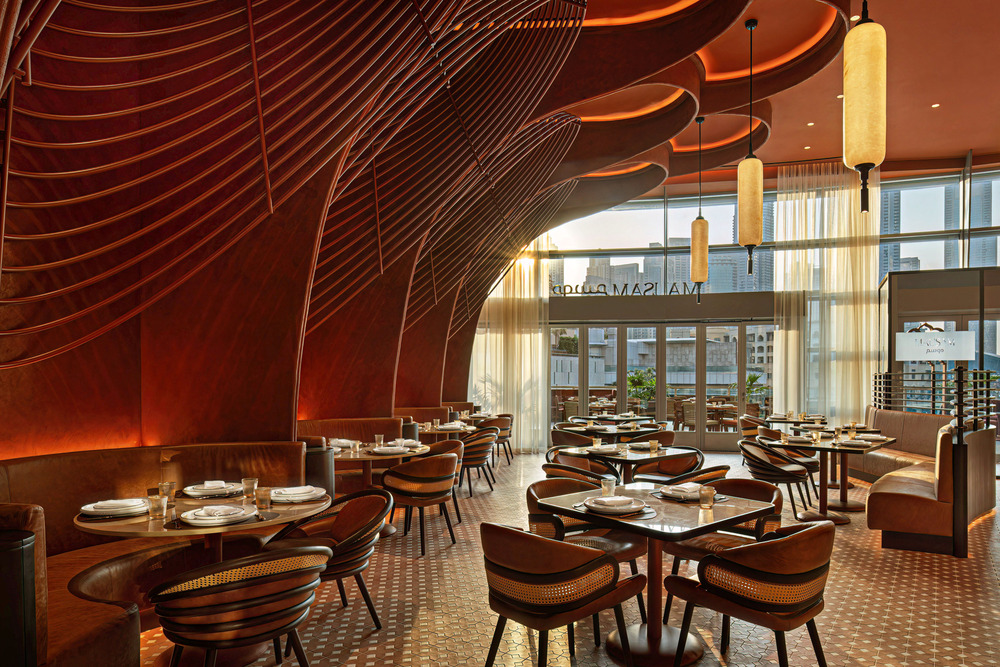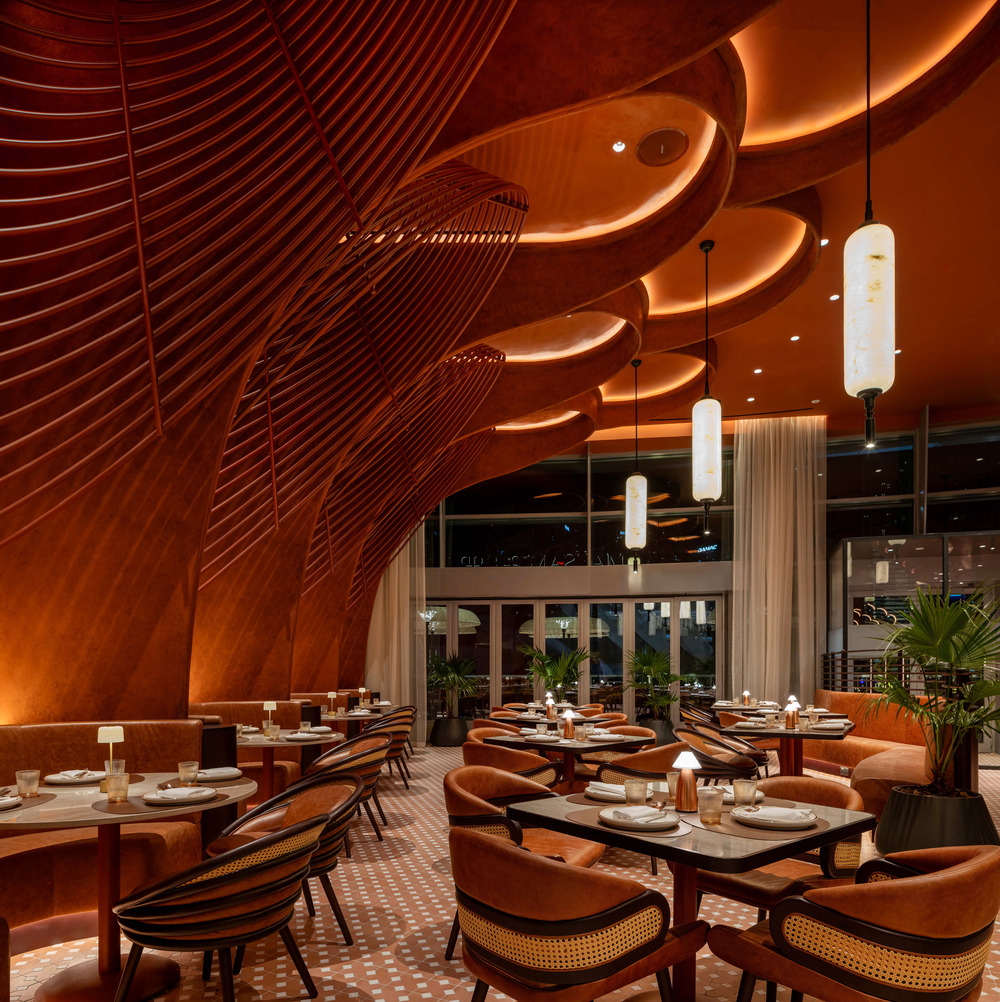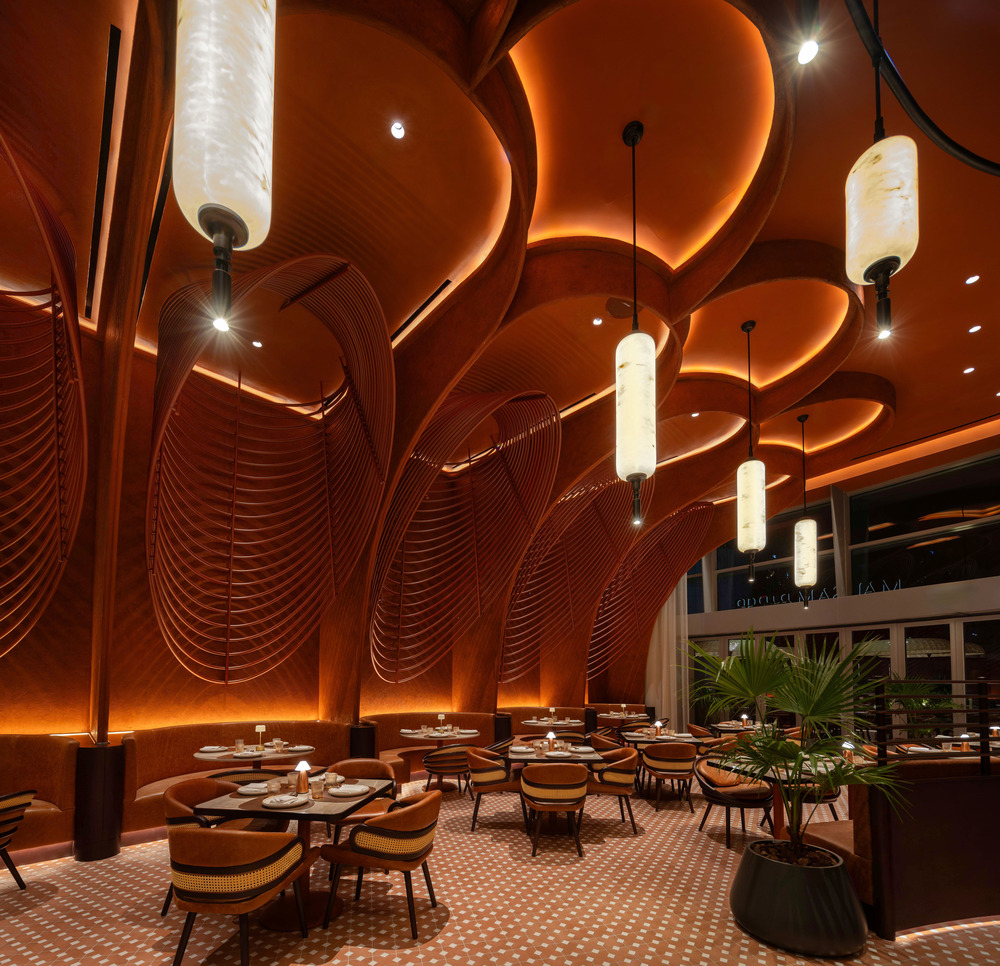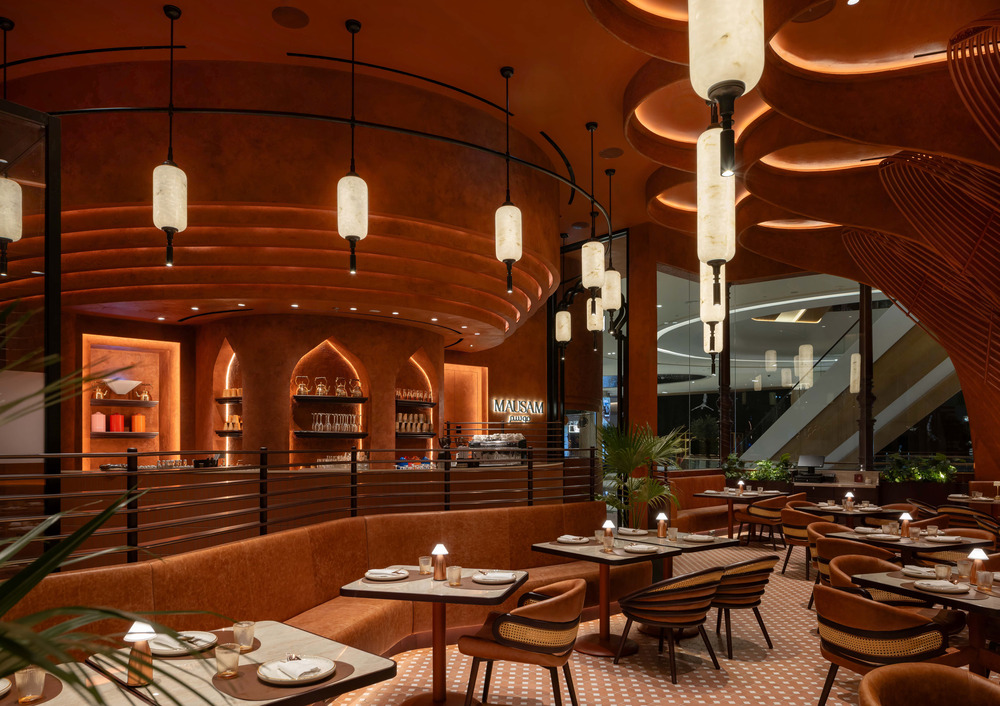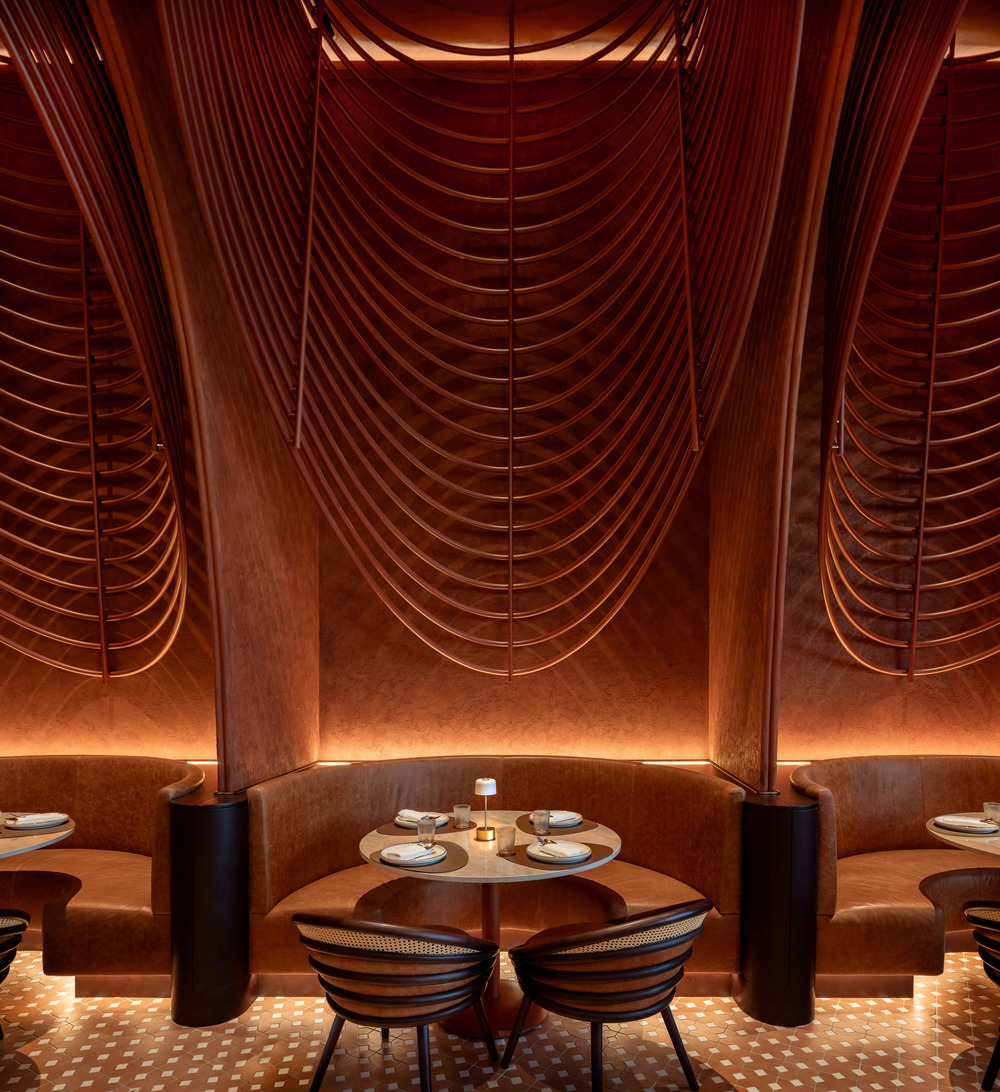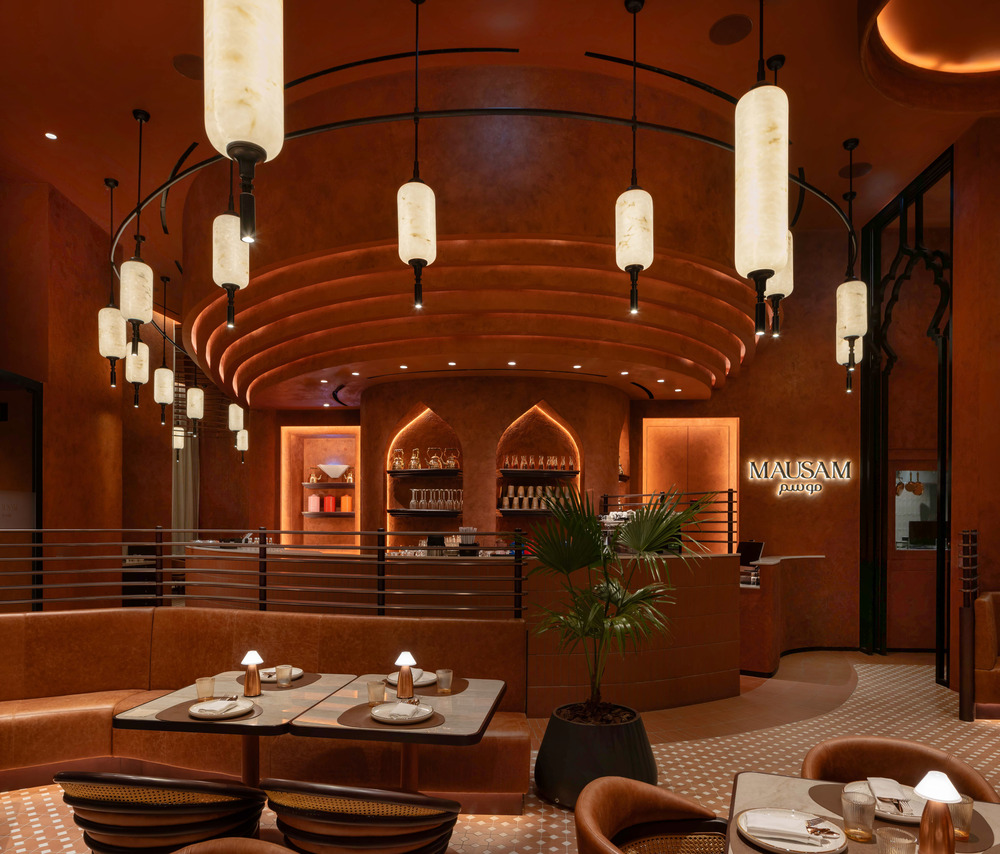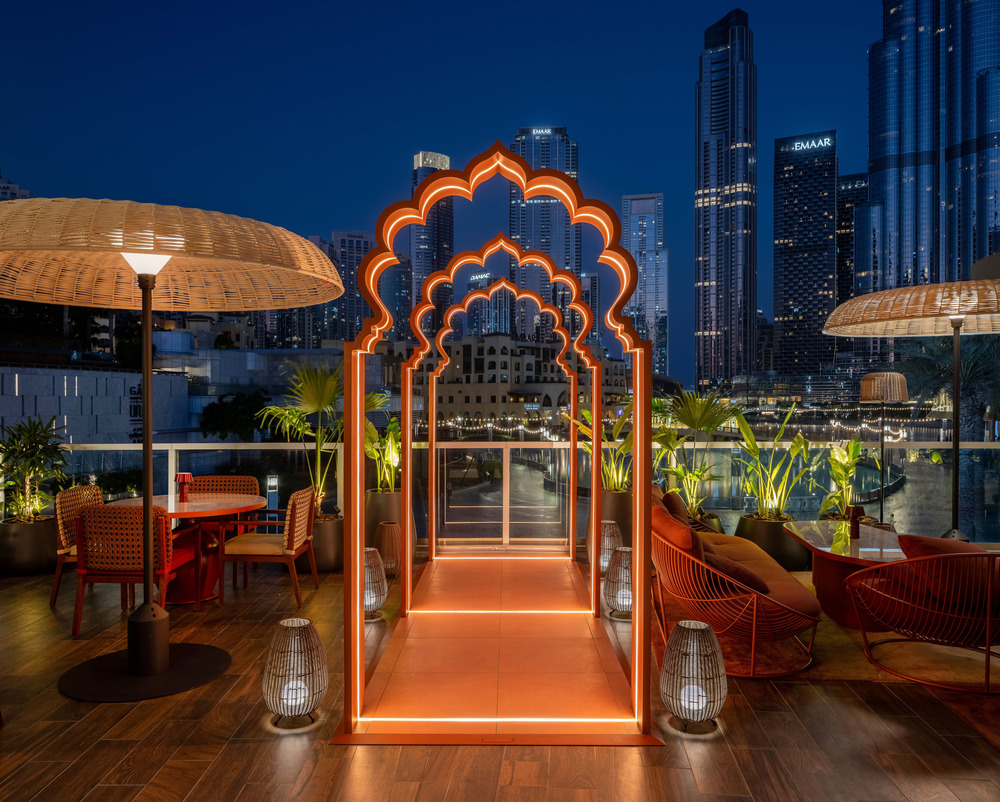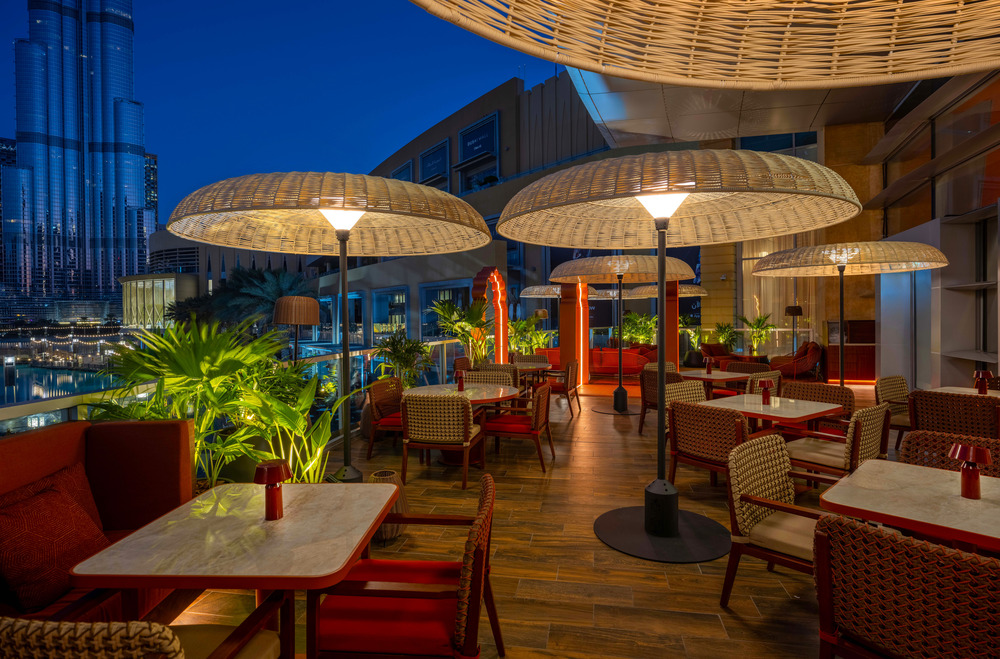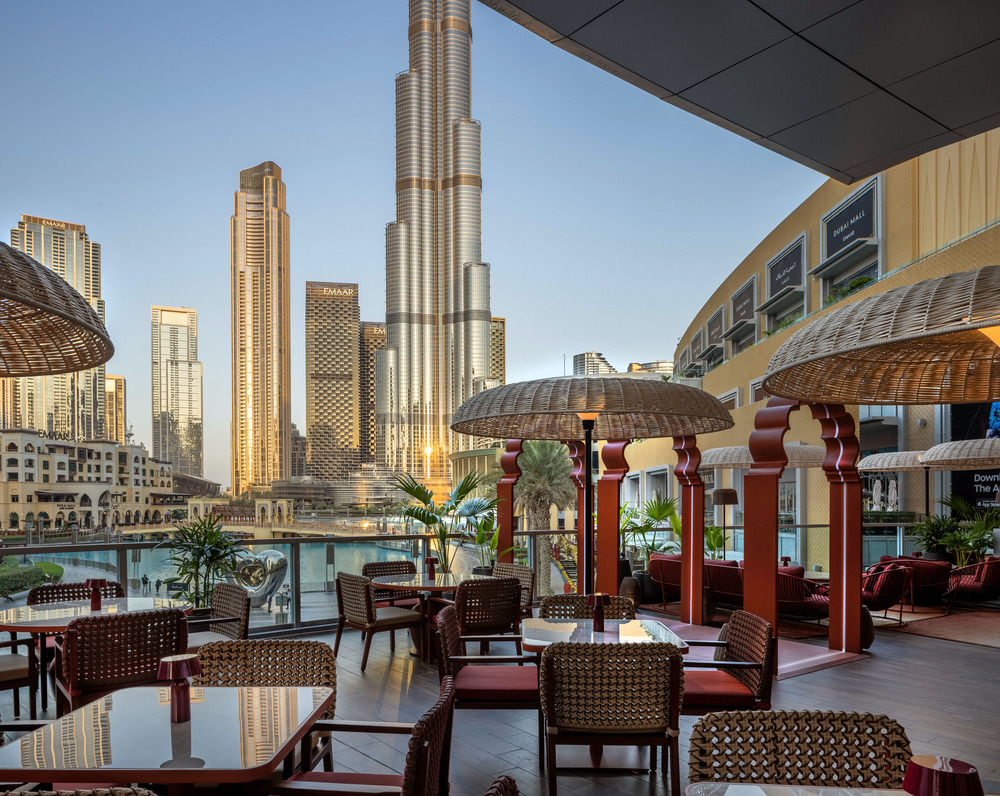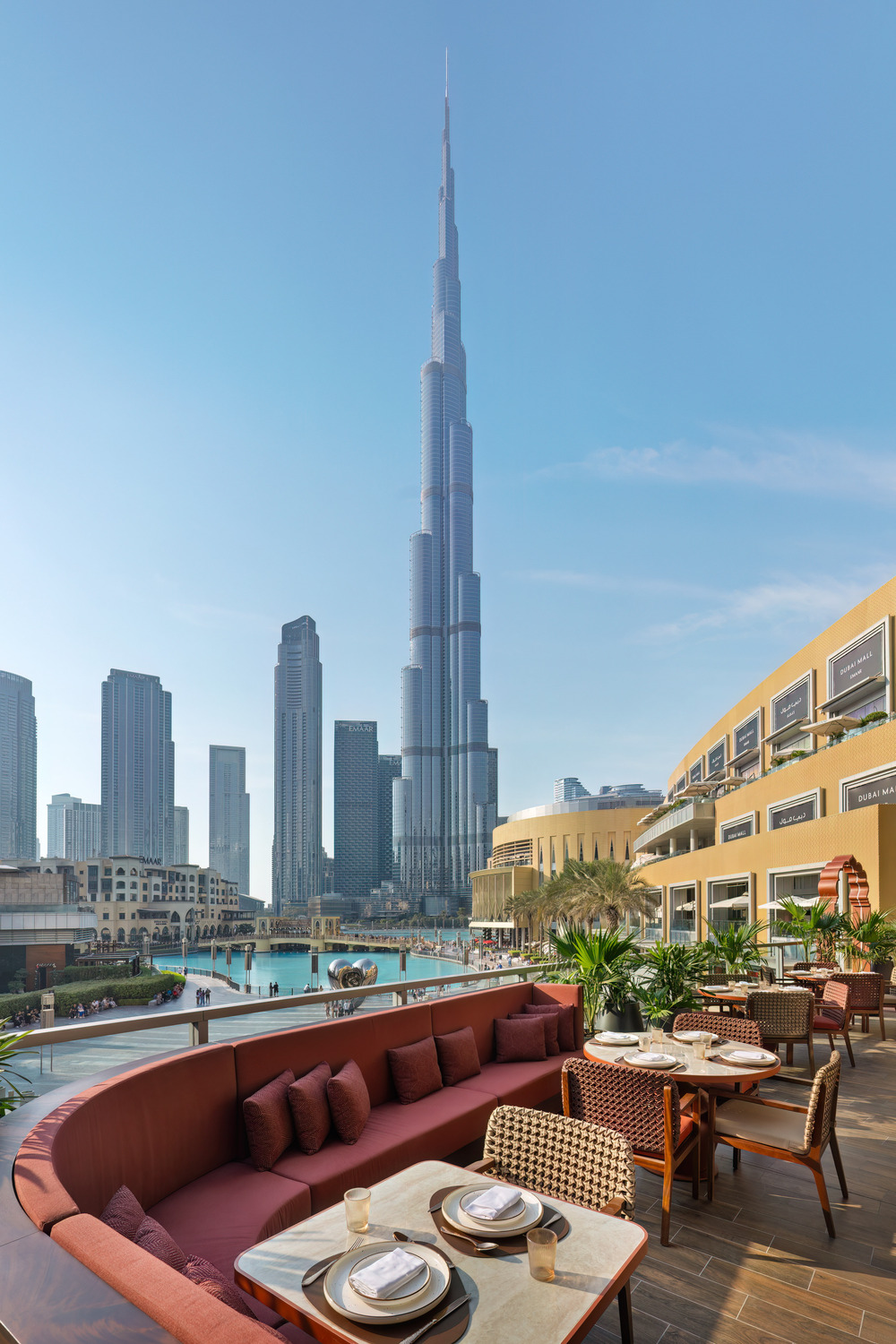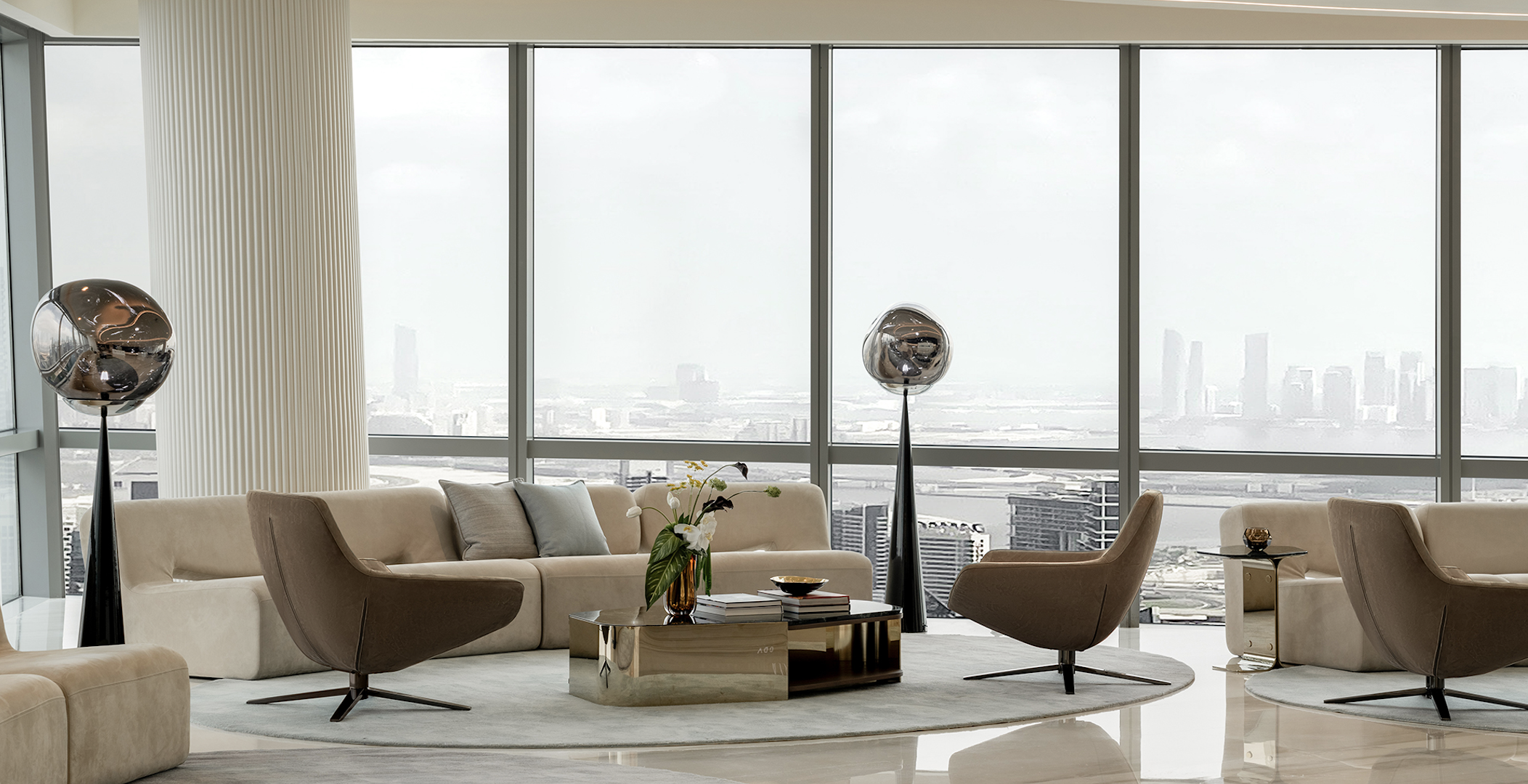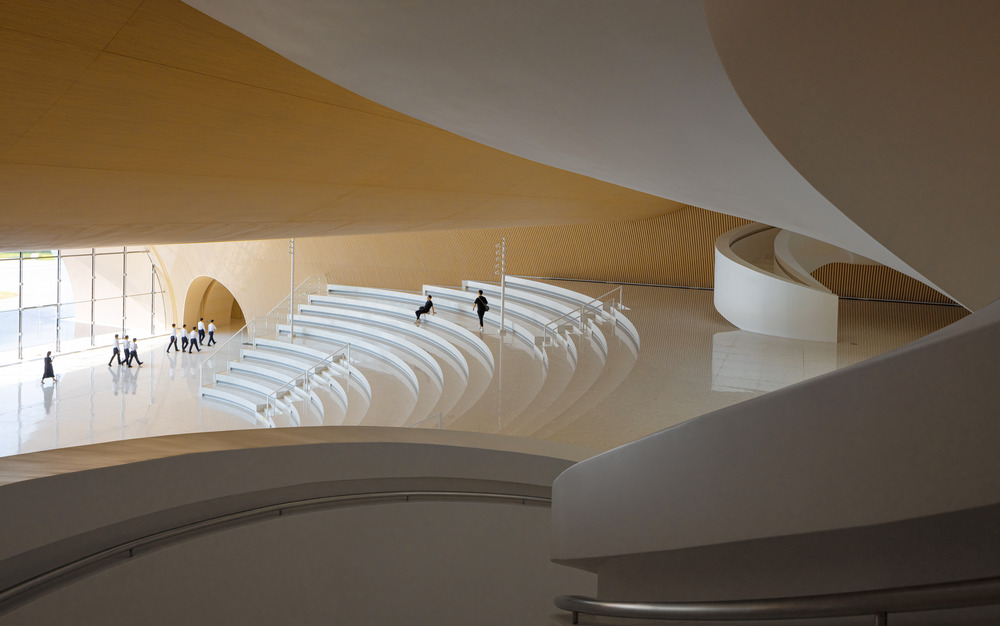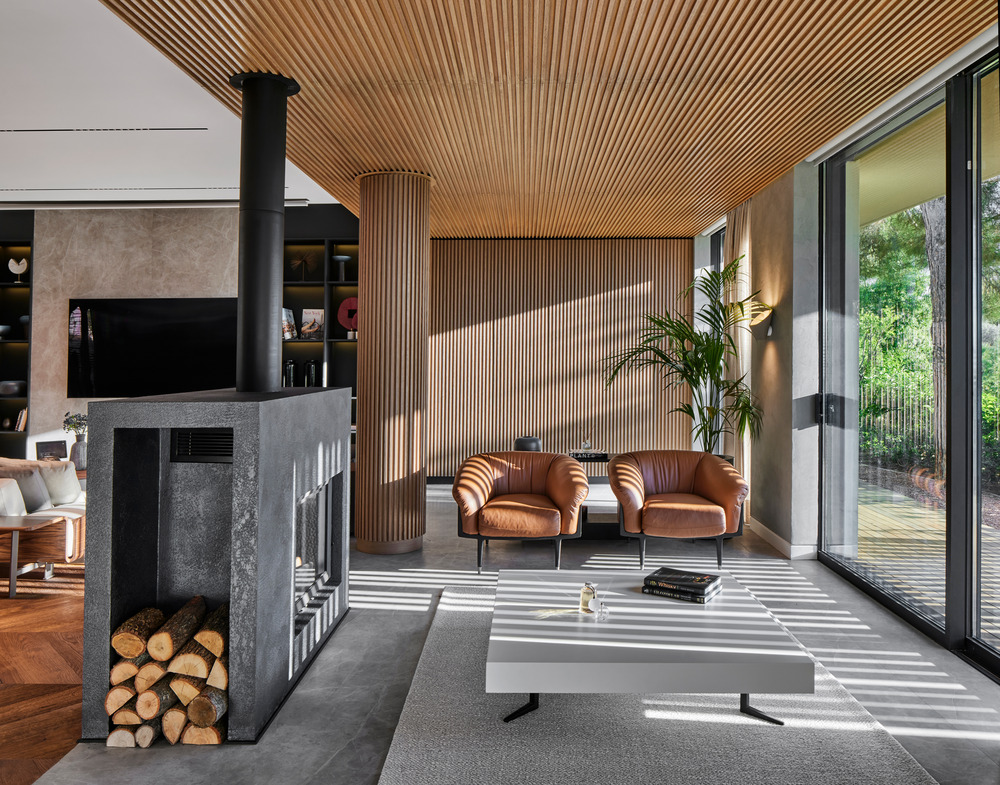Designed by 4SPACE and located in the iconic Dubai Mall, Mausam is a striking exploration of architectural and cultural dialogue, where Indian heritage converges with modern luxury. The design of this dining space is a sophisticated homage to India’s architectural grandeur, embodied through a series of deliberate, refined gestures that channel both historical craftsmanship and contemporary design principles. Inspired by the monumental Red Fort, Mausam offers an immersive spatial experience, blending intricate details with contemporary minimalism to create a narrative of elegance and sensory refinement.
Architectural Dialogue: Indian Craftsmanship reimagined
The design vocabulary of Mausam takes cues from the historical and symbolic elements of Mughal architecture, reinterpreting these features through a modern lens. The defining architectural feature is the expansive, arching framework, which draws direct inspiration from the Red Fort’s Mughal arches. These arches create a rhythmic spatial flow, guiding movement and framing the dining experience within a structure that feels both expansive and intimate. The incorporation of latticework details, a hallmark of Mughal design, adds tactile richness and a visual layering that enhances both the scale and intimacy of the space.
- Photo credit: Anas Rifai
The material palette is a direct reference to India’s rich architectural heritage, particularly the warm red sandstone that defines many of the country’s iconic monuments. Earthy terracotta tones are used throughout, grounding the space in cultural authenticity, while allowing for sophisticated interplay with brass accents and textured wall finishes. The integration of high-quality materials, such as engineered marble, cane, and leather, creates an atmosphere of refined opulence, softening the austere grandeur often associated with traditional Indian design.
In terms of furniture, Mausam features custom-designed pieces that balance traditional craftsmanship with contemporary ergonomics. The juxtaposition of plush, upholstered banquettes and elegantly designed cane and leather chairs creates a dynamic seating arrangement that allows for both openness and intimacy. The porcelain tile flooring, with its traditional Indian motifs, anchors the space in its cultural context, while contributing to the overall aesthetic cohesion of the interior. Lighting is thoughtfully integrated into the architecture, with lantern-style pendants referencing traditional Indian lamps, casting a warm and inviting glow throughout the space. Recessed lighting enhances the sculptural quality of the architectural curves, further elevating the sense of drama.
See related: Gui Temple Restaurant Showcases Ancient Beijing Heritage with a Modern Twist
Sculptural Installation: The Rings as Architectural Language
A key feature of Mausam’s interior design is the sculptural rings installation, which serves as both a visual focal point and a functional divider. This installation deconstructs the traditional domes and lattice structures found in historic Indian forts and palaces, presenting them in a contemporary framework that suggests fluidity and motion. The curved metal rings, rising from the floor to the ceiling, are crafted from precision-engineered materials, their soft metallic finish and terracotta-hued patina evoking the warmth of Indian sandstone. The undulating forms create a dynamic spatial experience, offering a sense of depth and rhythm.
The lighting strategy employed within the rings accentuates the fluidity of the forms, with concealed LED strips casting a soft glow that shifts throughout the day. This interplay of light and shadow not only highlights the installation’s sculptural presence, but also adds layers to the perception of the space, creating a more immersive and complex experience. Beyond their visual impact, the rings also serve a functional purpose by subtly dividing the expansive restaurant into intimate dining zones, guiding guests through the space while maintaining a sense of openness.
The Façade: A Precursor to Indian Elegance
Mausam’s façade establishes a powerful visual identity, blending traditional Indian architectural motifs with contemporary elements. The exterior is clad in terracotta textures, referencing the red sandstone that defines many of India’s monumental structures. The intricate detailing on the façade speaks to the rich legacy of Indian craftsmanship, while the bold, black metal arch framing of the entrance offers a modern reinterpretation of Mughal-era gateways, creating a welcoming yet striking threshold.
The transparency of the building’s frontage, with floor-to-ceiling glass panels, allows for a glimpse of the architectural drama within. Passersby are drawn to the captivating rings installation, framed by the soft, ambient glow of lantern-style lighting. The façade’s design successfully blurs the boundary between the interior and exterior, creating an inviting presence within the urban fabric of Dubai Mall.
Culinary Theatre: The Open Kitchen
A central element of Mausam’s design is the open kitchen, which functions as both a performance space and a sensory experience. Behind the transparent window, traditional Indian tandoors—clay ovens—take center stage, offering diners a direct view into the culinary process. This not only reinforces the restaurant’s commitment to authenticity, but also creates an engaging dialogue between the preparation of food and the experience of dining. The copper and brass cookware reflect the rich culinary heritage of India, while the visual connection to the kitchen allows both diners and mall visitors to experience the sensory excitement that defines Indian cuisine.
The Outdoor Terrace: A Continuation of the Experience
Mausam’s outdoor terrace offers a contemplative counterpoint to the opulence of the interior. The panoramic views of the Burj Khalifa and the Dubai Fountain provide a dramatic backdrop, while a grand illuminated archway frames these views, creating a visual dialogue between the restaurant’s design and the iconic Dubai skyline. The terrace seating arrangement, featuring woven rattan and plush deep-toned cushions, is designed to maximize the stunning vistas, while providing a variety of seating configurations, from intimate gatherings to larger social events.
The lighting design on the terrace mirrors the interior’s emphasis on warmth and softness. During the day, the space is flooded with natural light, creating a vibrant atmosphere, while at night, carefully curated ambient lighting—such as handcrafted woven floor lamps and subtle LED accents—transforms the terrace into a serene and enchanting space. The introduction of lush greenery enhances the sense of seclusion, creating a peaceful refuge in the midst of Dubai’s bustling cityscape.
Mausam as a Cultural Narrative
Beyond its architectural and culinary offerings, Mausam represents a broader narrative—one that bridges the gap between tradition and modernity. The restaurant’s design is not just a visual experience, but a cultural one, telling the story of India’s rich heritage while reinterpreting it for a contemporary, global audience. Every detail, from the sculptural installations to the carefully selected materials, has been crafted to evoke the timeless elegance of India’s past, while offering a space where modern luxury and cultural legacy coexist in harmony.
See recent news:
MASONPRINCE High-End Fashion Brand by TOMO Design
Nine X Nine by Sanjay Puri Architects

